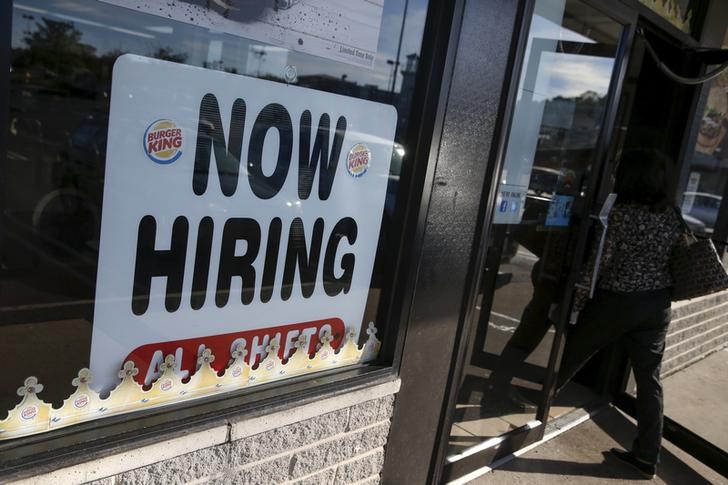Gold prices set for weekly gains on dovish Fed outlook; silver near record high
By Geoffrey Smith
Investing.com -- The recovery in the U.S. labour market appeared to strengthen in June, with 850,000 people finding a job, according to Labor Department figures released Friday.
The headline nonfarm payrolls number was well above a consensus forecast of 700,000. In addition, May's nonfarm payrolls gain was revised up by 24,000 to 583,000.
Daniel Zhao, senior economist with Glassdoor, noted via Twitter that "Job gains were most heavily concentrated in leisure and hospitality (+343,000), accounting for 40% of the gains" in the month.
However, other elements of the report weren't as unambiguously positive. The unemployment rate rose to 5.9% of the workforce, instead of falling to 5.7% as expected. That suggests that people who lost their jobs during the pandemic still aren't rejoining the labour force as quickly as could be hoped for.
"Overall, this report signals incremental progress in the pace of job growth, but there’s no sign yet of a shift back into the labour force," said Ian Shepherdson, chief U.S. economist with Pantheon Macroeconomics, in a note to clients. "The missing millions are still missing," he said, adding that overall employment is still some 8.8 million short of its pre-pandemic trend.
U.S. stock futures gained on the news, on the perception that the weaker-looking parts of the report will provide fresh arguments for keeping unprecedented amounts of monetary stimulus in place. The Federal Reserve is still injecting $120 billion a month into the financial system through bond purchases, despite increasing signs of overheating in some areas of the economy such as the housing market, and broader signs of rising inflation in the economy at large.
Rising wage pressures, often a key concern of inflation hawks, came out a little weaker in the report that had been expected. Average hourly earnings growth slowed to 0.3% from 0.4% in May, while their 3.6% annual growth rate was also below the 3.7% expected.
The participation rate, which measures employment relative to the total working age population, also remained stuck at May's level of 61.6%.
"Participation for both men and women has been flat over the past year," said Shepherdson. "If that doesn’t change in the fall, the risk of sustained inflation, via accelerating wage growth, will be much bigger."
